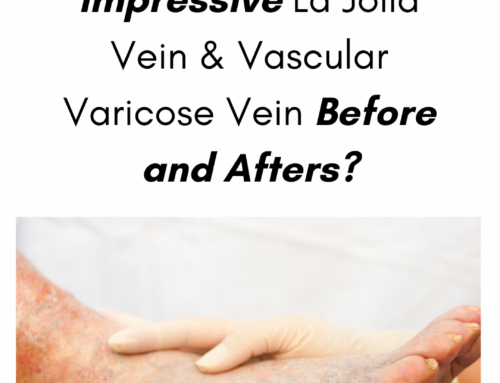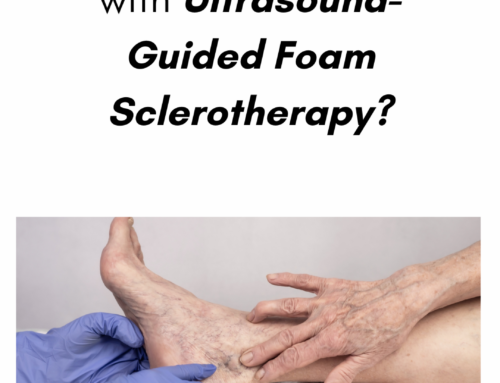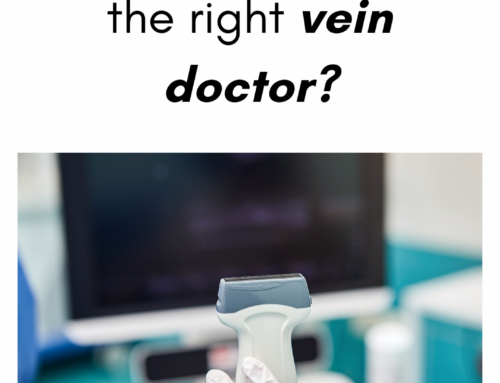Skin Darkening and Varicose Veins

Untreated varicose veins and underlying venous insufficiency can cause changes in the skin, including skin darkening. We call this skin hyperpigmentation. This usually occurs in the inner ankle and can worsen to involve the lower portion of the leg as shown in the picture. Over time, the skin becomes firm, dry, eczema-like, and can even break open, causing a venous leg ulcer. When the skin becomes darker as a result of a vein problem, this is referred to as chronic venous insufficiency (CVI). This can be prevented by addressing the underlying venous insufficiency and varicose veins early on.
What is chronic venous insufficiency?
Chronic venous insufficiency (CVI) is an inflammatory condition caused by long standing, untreated venous reflux disease. Commonly, venous reflux disease causes a collection of symptoms such as leg swelling, heaviness, fatigue and varicose veins. But, over time, when blood is no longer circulating properly in the leg veins, skin changes can also appear. When skin changes appear, this is termed, chronic venous insufficiency (CVI). Venous stasis is another term used for this condition. Chronic inflammation from CVI causes the skin around the ankles to darken, become dry, itchy, and firm. In severe cases, the skin can start to break down and ulcerate. The ulcer (wound) occurs in the inner or outer ankle and is also referred to as a stasis ulcer or venous ulcer.
Venous stasis skin changes associated with venous insufficiency include:
- Darkening of the skin along the ankles
- Itching and dry skin around the ankles (venous eczema)
- Development of wounds around the ankles, called venous leg ulcers
How La Jolla Vein & Vascular treats patients who experience darkening of the skin:
Step 1: The Underlying Problem
The first step is to treat the underlying problem, the venous reflux. The specific pattern of venous reflux was detected by ultrasound. Venous reflux usually starts in the saphenous veins. The saphenous veins are most effectively treated with vein ablation procedures. This involves placing a small catheter within the vein and using heat or a solution to produce injury and eventual closure of the vein. The most commonly used treatments for the saphenous veins are radiofrequency ablation (RFA), laser ablation, mechanico-chemical ablation (MOCA or Clarivein), and in some cases Varithena Foam. The treatment Step recommendation is customized, based on where reflux is present and other clinical factors.
Step 2: Varicose Veins
After the underlying saphenous vein reflux is corrected, the bulging veins (varicose veins) can be treated by injecting a foamed medication that will cause them to scar and eventually dissolve (foam sclerotherapy), or to remove them using tiny incisions. The most common method is foam sclerotherapy. This is also known as ultrasound-guided foam sclerotherapy (UGFS).
Step 3: Spider Veins
Spider vein treatment is always considered a cosmetic procedure. If improved cosmesis is a goal of treatment, make sure to discuss this with your doctor and plan on having cosmetic treatment as the last step. Spider vein treatment is accomplished by sclerotherapy, which is an injection of a liquid medication into the spider veins. Ask your provider for an estimate about how many treatment sessions/ vials are necessary to get the results you want.





